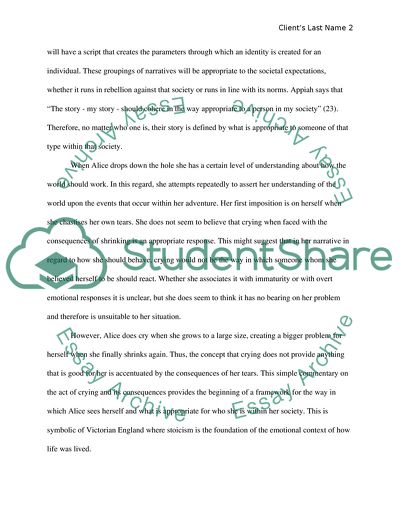The Social Scriptorium and Alice: Carrolls Commentary on Societys Influence on Identity Essay Example | Topics and Well Written Essays - 1500 words. https://studentshare.org/literature/1743881-discuss-the-scripts-alice-brings-with-her-to-wonderland-and-the-world-in-looking-glass-and-the-scripts-she-encounters-in-each-place-how-do-these-various-scripts-meshnot-mesh-how-does-alice-adapt-to-a-world-with-different-scripts-discuss-her-sens
The Social Scriptorium and Alice: Carrolls Commentary on Societys Influence on Identity Essay Example | Topics and Well Written Essays - 1500 Words. https://studentshare.org/literature/1743881-discuss-the-scripts-alice-brings-with-her-to-wonderland-and-the-world-in-looking-glass-and-the-scripts-she-encounters-in-each-place-how-do-these-various-scripts-meshnot-mesh-how-does-alice-adapt-to-a-world-with-different-scripts-discuss-her-sens.


